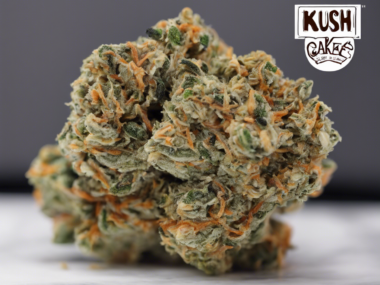Introduction
The Bargad Ka Ped, also known as the Banyan tree, is a majestic and revered tree that holds great significance in various cultures around the world. This iconic tree is not only visually stunning but also holds immense ecological, cultural, and medicinal value. In this comprehensive guide, we will delve into the various aspects of the Bargad Ka Ped, exploring its history, symbolism, ecological importance, health benefits, and much more.
History and Symbolism
The Bargad Ka Ped has a rich history that dates back thousands of years. In many ancient civilizations, including Indian, Egyptian, and Mesopotamian cultures, the Banyan tree was considered sacred and was often associated with divine powers and spiritual significance. It is believed to symbolize longevity, wisdom, and resilience due to its ability to live for hundreds of years and withstand harsh environmental conditions.
In Hindu mythology, the Banyan tree is considered the abode of Lord Krishna, and its roots represent the interconnectedness of all living beings. In Buddhism, it is believed that Buddha attained enlightenment under the Bodhi tree, which is a species of the Banyan tree. The intricate aerial roots of the Bargad Ka Ped symbolize strength, stability, and the cycle of life and death.
Ecological Importance
The Bargad Ka Ped plays a vital role in maintaining ecological balance and supporting biodiversity. As a large and long-lived tree species, it provides habitat and food for a wide range of birds, insects, and animals. The dense canopy of the Banyan tree offers shade and shelter to various species, while its aerial roots create microhabitats for epiphytic plants and organisms.
Moreover, the Bargad Ka Ped has a unique growth habit called vegetative propagation, where its branches send down roots that eventually grow into new trunks. This process not only allows the tree to expand its canopy but also helps in soil stabilization and erosion control. The extensive root system of the Banyan tree helps in preventing soil erosion and maintaining soil fertility.
Cultural Significance
In many cultures, the Bargad Ka Ped is revered as a symbol of strength, unity, and protection. It is often planted near temples, shrines, and sacred sites as a sign of reverence and devotion. In India, the Banyan tree is considered auspicious, and people tie threads around its trunk while making a wish, believing that the tree has the power to fulfill their desires.
The Banyan tree is also associated with festivals and rituals in various cultures. In Thailand, people offer prayers and light candles under the sacred Bodhi tree, a type of Banyan tree, during religious ceremonies. In Bali, the Banyan tree is believed to be inhabited by spirits and is treated with great respect and offerings.
Health Benefits
Beyond its cultural and ecological importance, the Bargad Ka Ped also offers a range of health benefits. Various parts of the tree, including the leaves, bark, and aerial roots, are used in traditional medicine for their therapeutic properties. The Banyan tree is known for its anti-inflammatory, antimicrobial, and antioxidant effects, making it a valuable ingredient in natural remedies.
The leaves of the Banyan tree are used to treat digestive issues, skin ailments, respiratory problems, and inflammation. The bark is known for its astringent and antidiarrheal properties, while the aerial roots are used to improve vitality, strengthen bones, and enhance reproductive health. Additionally, Banyan tree extracts are used in skincare products for their moisturizing and rejuvenating effects.
Propagation and Care
Growing a Bargad Ka Ped in your garden or landscape requires careful attention to its specific needs and growing conditions. The Banyan tree thrives in tropical and subtropical climates with ample sunlight, well-draining soil, and regular watering. It can be propagated from seeds, cuttings, or air layering, although propagating from seeds is less common due to the tree’s specialized growth habits.
When planting a Banyan tree, it is essential to provide adequate space for its expansive root system and canopy. Regular pruning is necessary to maintain the tree’s shape and size, as the Bargad Ka Ped can grow to immense proportions if left unchecked. Additionally, mulching around the base of the tree helps in retaining moisture and suppressing weed growth.
Frequently Asked Questions (FAQs)
- How long does a Bargad Ka Ped live?
-
The Banyan tree is known for its longevity and can live for hundreds of years, with some specimens surviving for over a millennium.
-
What is the significance of tying threads around a Banyan tree?
-
Tying threads around the trunk of a Banyan tree is a common practice in India and other cultures as a form of prayer and making wishes.
-
Are there any superstitions associated with the Banyan tree?
-
In some cultures, cutting down a Banyan tree is believed to bring bad luck or misfortune, as it is considered sacred and inhabited by spirits.
-
Can the Banyan tree be grown in pots or containers?
-
While young Banyan trees can be grown in pots, they will eventually outgrow their containers due to their extensive root system and need to be planted in the ground.
-
Are there any myths or legends associated with the Banyan tree?
-
In Hindu mythology, the Banyan tree is believed to be the dwelling place of spirits and gods, with various stories and legends linked to its mystical properties.
-
What are some common uses of the Banyan tree in traditional medicine?
-
The leaves, bark, and aerial roots of the Banyan tree are used to treat various health conditions, including digestive disorders, skin ailments, respiratory problems, and inflammation.
-
How can I protect a Banyan tree on my property from disease and pests?
-
Regular inspections, proper pruning, adequate watering, and ensuring good soil health are essential in protecting a Banyan tree from diseases and pests.
-
What is the best time to plant a Bargad Ka Ped?
-
The ideal time to plant a Banyan tree is during the spring or early monsoon season when the soil is moist, and the tree has enough time to establish its roots before the onset of winter.
-
Do Banyan trees require any special care during extreme weather conditions?
-
Banyan trees are resilient and can withstand moderate drought and heat, but young trees may require additional watering and protection during extreme weather events.
-
Can the aerial roots of a Banyan tree cause damage to buildings or structures?
- While the aerial roots of a Banyan tree are not invasive, they can potentially cause damage to nearby structures if left unchecked, requiring regular maintenance and monitoring.
In conclusion, the Bargad Ka Ped or Banyan tree is a remarkable symbol of strength, spirituality, and ecological importance that continues to captivate people around the world. Whether admired for its grandeur, revered for its cultural significance, or valued for its healing properties, the Banyan tree stands as a testament to the interwoven relationship between humans and nature. By understanding and honoring the legacy of the Bargad Ka Ped, we can deepen our connection to the natural world and appreciate the beauty and wisdom it embodies.




